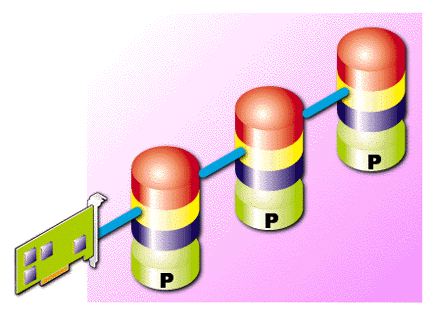DCSE Self-Study Training MaterialsRAID Theory |
|
||||||||
RAID 5
RAID 5 has some similarities to RAID 3. RAID 5 spreads the data from a file across different stripe sets in much the same manner as RAID 3. RAID 5 similarly calculates and writes a parity stripe. The major difference is that the parity is spread across the array in a manner similar to the data. Multiple independent accesses of the files on the array are optimized over RAID 3. Distributing the parity over the drives in the array distributes the workload for parity operations over the entire array. This is an improvement over RAID 3, where any write operation guarantees an access of the parity drive. If a RAID 5 array has several simultaneous and independent write operations, several simultaneous parity calculations could take place. If the parity information is all stored on one disk, then there will be contention at the parity drive while the parities are written. Spreading the parity across the array helps prevent this contention. RAID 5 is often referred to as Striping With Distributive Parity. The storage efficiency of RAID 5 is like that of RAID 3. For a typical Dell PERC 2 configuration, efficiency can range from 66 percent to 87 percent, for arrays with three to six drives, respectively. The main disadvantage of RAID 5 is that a write operation takes much longer than a read operation. The write operation takes longer because even a small write into a single stripe requires that all of the stripes on the other disks be read to recalculate the parity. RAID 5 is the industry norm.

RAID 5: Controller calculates a parity stripe from three data stripes and interleaves these on the disks.